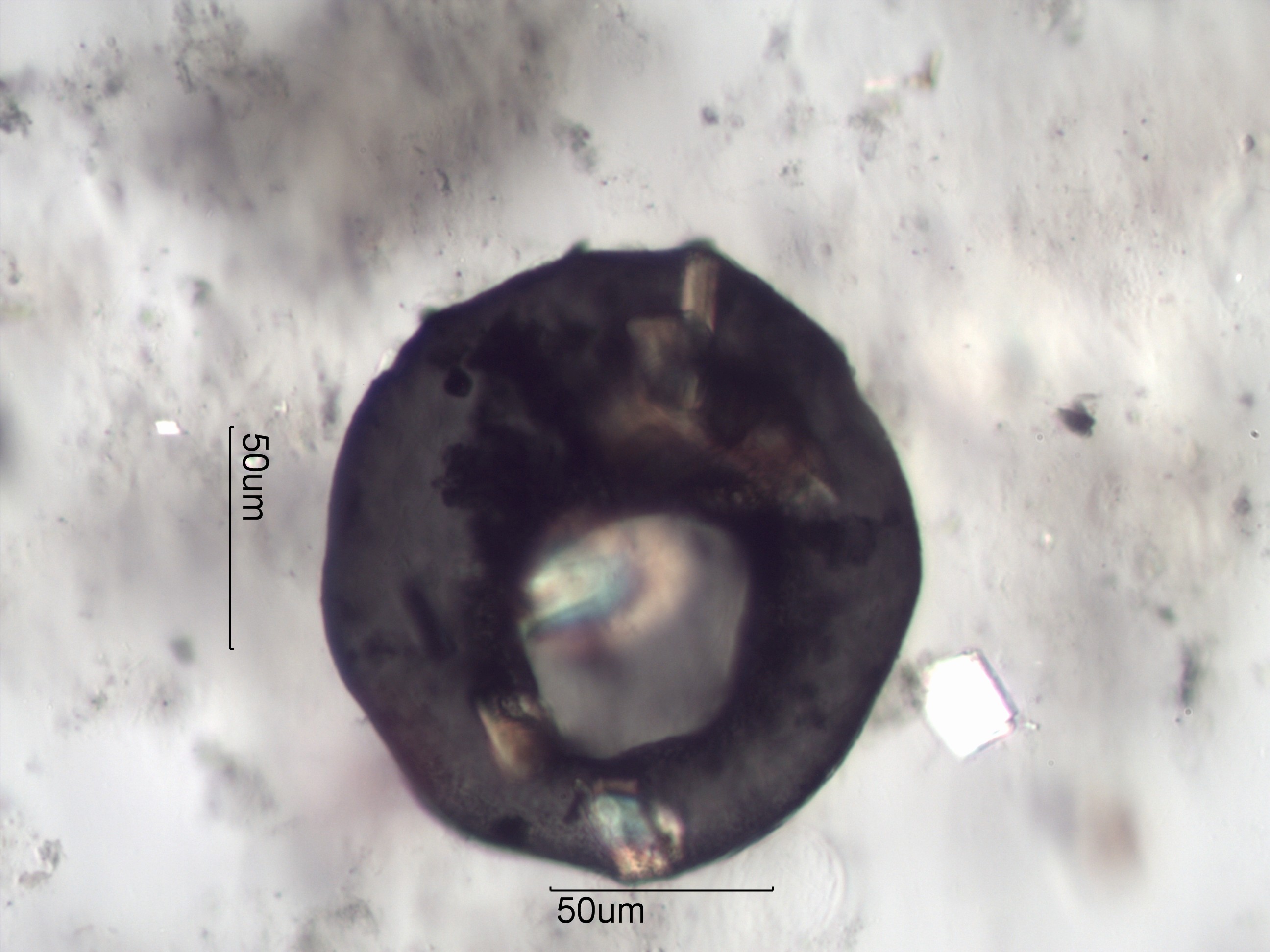Centropyxis aculeata with Adhereing Calcium Oxalate Phytoliths
This is a vent view of a sample of Centropyxis aculeata from a municiple sludge. The crystals attached to the test are calcium oxalate phytoliths rather than sand grains in this instance. The color of this specimen is the result of an anaerobic environment with the iron present in the cast converted in part to iron sulfide.
Transmitted Oblique Illumination
Scott, DAVID B., FRANCO S. Medioli, and Charles T. Schafer, MONITORING IN COASTAL ENVIRONMENTS USING FORAMINIFERA AND THECAMOEBIAN INDICATORS, Cambridge University Press, p. 112, 2001.
Definition/Function:
Centropyxis aculeata is a rhizopoda of the Order Testacida and Family Difflugiidae. It is a very common Thecamoebian.Significance in the Environment:
In comparisons between the thecamoebian populations in freshwater lakes the presence of a higher proportion of Centopyxis aculeata may indicate a more brackish condition.Characteristic Features:
Centropyxis aculeata is oval with 4-6 spines distal from the vent. It may be translucent to opaque, typically in shades of brown to black.Associated Particles:
References:
Jahn, T. L., HOW TO KNOW THE PROTOZOA, Wm. C. Brown Co. Publ., p. 127, 1949.Scott, DAVID B., FRANCO S. Medioli, and Charles T. Schafer, MONITORING IN COASTAL ENVIRONMENTS USING FORAMINIFERA AND THECAMOEBIAN INDICATORS, Cambridge University Press, p. 112, 2001.


